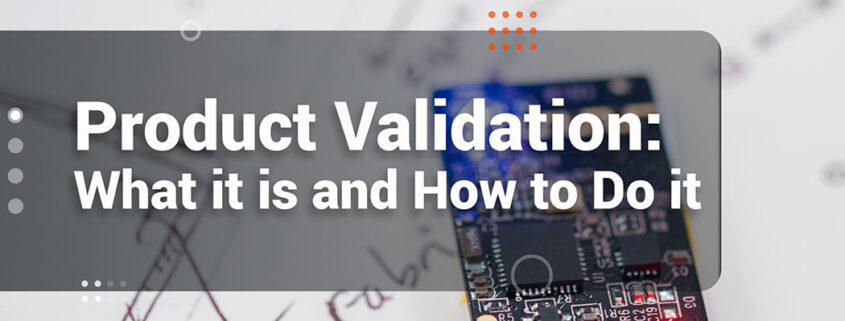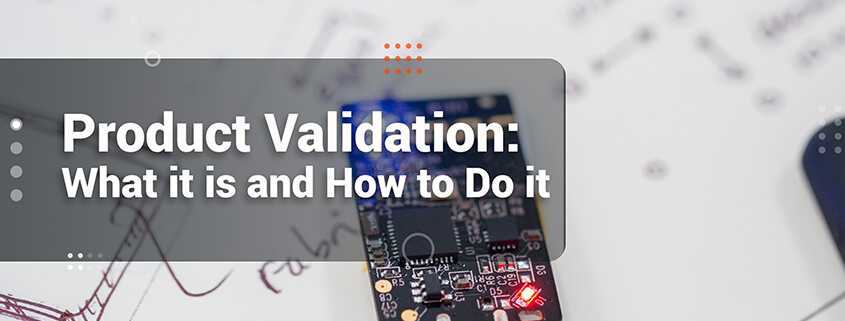When you have an idea for a new product, the excitement is tangible. Whatever your product is, you need first to make sure it’s actually worth investing the time and effort into. If you don’t, then you risk ending up with failures like the famous Coolest Cooler disaster on Kickstarter.
Many entrepreneurs are unfamiliar with the process known as product validation. Anxious to launch prematurely, they shy away from doing their due diligence. Sure, it can be hard to let go of an initial business idea but is much better to adopt a philosophy of “fail soon, fail quickly” and embrace the many iterations of product development.
And so today, we’ll learn about what product validation actually is, why it matters, and how to implement it in an effective way.
What is Product Validation?
Product validation is the process of checking if a product meets customer needs and is likely to be profitable. Many product ideas never make it to market, especially if they aren’t validated.
With in-depth research and prototyping, you will work your way to a Minimum Viable Product (MVP). This is basically just a test version made with the only most essential features. An MVP helps you determine which of your product’s features are of value to customers, so you can serve them as efficiently and profitably as possible.
For example, let’s take a simple product like an electric toothbrush. The main purpose is to brush your teeth, so your MVP should be able to do that. Anything else is extraneous. While it might be nice to have a hidden floss compartment, it’s not crucial. By creating an MVP, you can see what is necessary—and what is not.
Inspector Gadget is a cartoon for a reason; he’s not very realistic in day-to-day life.
Why Product Validation Matters
In 2004, Eric Ries learned the importance of product validation the hard way. For those of you who don’t know, Eric Ries is a software engineer and entrepreneur who launched an online reality world and social networking platform known as IMVU. The platform allowed users to create 3D avatars and interact with each other in a digital space.
His initial release of IMVU came after 6 tireless months of development and product creation. Much of that time was spent integrating all of the other instant messaging services available at the time into his platform because he assumed this was what customers wanted.
After the launch sadly flopped, he did interviews with target customers and he realized his key assumption had been incorrect. People weren’t inviting friends through other instant messengers because they didn’t yet know if IMVU was any good—but they were willing to download IMVU as a new and separate service to try on its own. From this painful experience of wasting 6 months, Eric Ries learned a lesson in product validation that we can all learn from.
Product validation is critical not only from the perspective of a company’s team and investors—but for the benefit of consumers. A strong customer focus and dedication to understanding their needs mean you’ll be far more successful.
Another aspect of product validation that many fail to consider is that it can be a great time to grow brand awareness. Getting feedback on your early prototypes is a way to get your customers involved and be a part of something. Many Kickstarters, for example, create social media pages and focus their community to build relationships with future customers.
How To Do Product Validation
Product validation can be broken down into four basic pillars. We must first validate the problem that the product will attempt to solve, examine the market for the product, prototype the product itself, and assess buyer willingness.
Whether you are preparing to sell physical products, like merchandise, or digital products, such as software tools, you need to make sure it’s a viable idea And so, here are some basic steps to consider:
1. Problem: If you haven’t yet, find your first 5-10 people who are enthused by how the product idea could help them. This is evidence a real pain point exists. From there, interviewing can be done to dive deeply into the relevant problem.
Another way to do this is to observe the issue in real-time. For instance, you might sit in on a business meeting where workers are struggling with technology limitations that your software idea could solve. Many inventions came out of simple observation.
Lupe Hernandez, a student nurse, is one such story of this. While on shift, she saw the need for hand sanitizer in places where there was limited soap and water access. That observation would eventually lead to the invention of hand sanitizer.
2. Market: Next, you need to conduct market research to see what the current state is by getting information from your potential customers.
You can conduct market research in a variety of ways. Many businesses do it in-house but you can also hire a third-party company. Here are some of the ways to gather market research:
- Surveys
- Product testing
- Focus Groups
Let’s use the example of a new type of mop. You might do surveys online asking people what they look for in their cleaning supplies and what problems they have. You could also lookup forums online to see what people are saying and even in the product reviews of competitor mops.
3. Product: After you’re sure your product idea can fill a gap in the market, it’s prototype time. For your very first prototype, think of something you could put together quickly. As you iterate on your prototypes and increase the complexity, you will need to keep testing them. You’ll also need to seek out early beta-testers for feedback.
Prototyping is vital in making sure your product works—and does what you’re promising it does. We always recommend working with a product design firm to help you bring your product idea to life. They’ll have the knowledge and skills to help you through the product design and development phase easily.
4. Buyer willingness: Finally, you need to assess if your potential customers are actually going to buy your product. You can also identify their Willingness To Pay (WTP), which is the maximum price your customers would pay for your product.
To identify this, you can again conduct research a few ways:
- Survey and Focus Groups: Asking customers directly what they would pay.
- Competitor Analysis: Assess competitor pricing to help guide your own.
- Conjoint Analysis: A specialized type of survey where customers rank each feature with numerical value.
- Experiments & Testing: Adjust your pricing and see how sales are impacted.
Product validation is nonlinear. At any point, a test may fail and need tweaking. If you end up stuck at a given stage, you will know to either regress to a previous stage of validation, or quit and start from square one. Delegation is your friend here.
And if you need help, there are plenty of product design firms out there who will take on all the prototyping and user testing, and bring more objectivity to your decisions. They’ll guide you through the process and make sure you’re doing everything right.
Once your product has passed all this and is validated, you can be confident it’s time to go to market and bring your idea to fruition.
Key Takeaways
Product validation is how you pave the right path to solving a real customer problem. It is rare for anyone’s initial product idea to strike gold, but it helps to remain curious, open, and customer-focused through the stages of development.
What you ultimately end up with is a product idea that passes every conceivable test and will actually fill a gap in the market. With product validation, you’ve ensured your product idea is not going to be a flop.
We’ve helped our clients bring their product ideas to life, and we can help you do the same. Reach out today and we’ll help you with everything from product validation to prototyping.
About the Author:
Ventrify is a product design and manufacturing firm that helps entrepreneurs bring product ideas from concept to market. We take in fledgling ideas and bring them through our iterative design process to create products our clients can be proud of. Then, we work with manufacturing facilities worldwide to bring our clients the highest quality products at competitive prices.
If you have questions about using prototypes in your product development journey or need help, reach out to us through our Website, Facebook, or LinkedIn.
Article by Victoria Fraser







